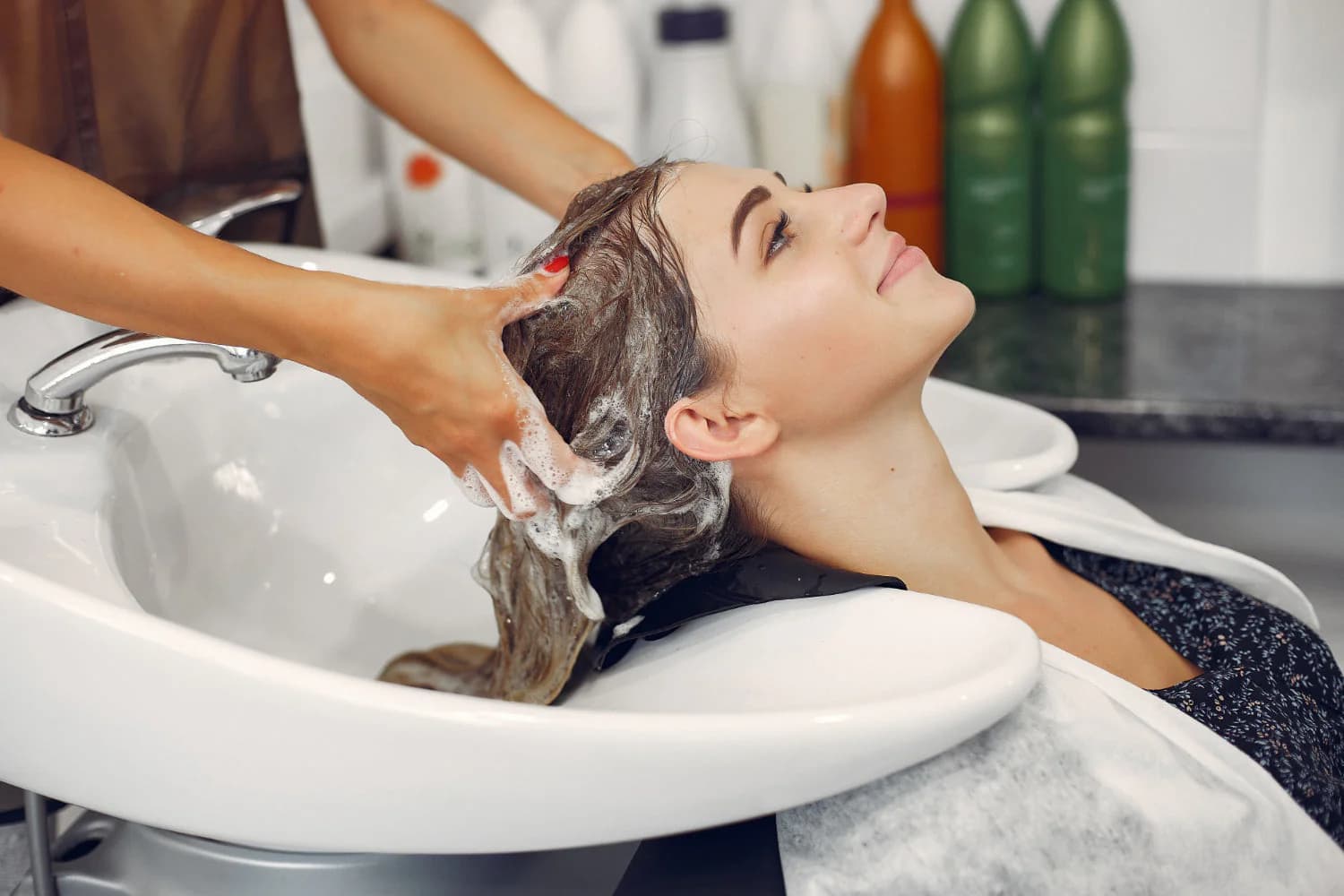
6 Mistakes to Avoid After Hair Protein Treatment
A hair protein treatment is one of the most popular ways to achieve smooth, shiny, and frizz-free hair. But the results don’t depend only on what happens in the salon, they also rely heavily on how you take care of your hair afterward. Many women unintentionally make small mistakes, such as washing their hair too soon or using a shampoo that contains sulfates, which can strip away the treatment and shorten its lifespan.
At Belas Store, we believe that beautiful hair starts with the right daily routine. In this guide, we’ll share the 6 most common mistakes to avoid after a protein hair treatment, along with practical tips to help you maintain silky, healthy hair for months. You’ll also discover the best products to protect your hair from damage and keep the treatment working longer.
Why Protein Hair Treatments Sometimes Fail
A protein hair treatment is one of the most effective solutions for restoring shine, strength, and smoothness. Yet many women leave the salon only to feel disappointed weeks later when their results fade much sooner than expected.
The truth is, protein isn’t a magical solution that guarantees permanent results. It’s a form of hair care that requires proper aftercare to work effectively. Even the smallest mistake in the first few weeks, like washing too soon or skipping essential maintenance, can drastically shorten its lifespan.
Results can also vary depending on the hair itself. For example, severely damaged or chemically treated hair may struggle to hold onto the protein treatment as long as healthier strands. On top of that, your daily hair routine plays a huge role in determining whether the silky finish lasts for months or disappears after only a few washes.
In other words, the success of a protein treatment doesn’t end with the salon visit, it depends just as much on what you do afterward. That’s why, in the next section, we’ll break down the most common mistakes women make after a protein treatment, and how you can avoid them.
6 Common Mistakes After a Protein Hair Treatment

After getting a protein hair treatment, most people expect their hair to stay smooth, shiny, and frizz-free for months. But in reality, many women notice that the effects wear off quickly, or worse, their hair starts to feel dry, brittle, or frizzy again.
The truth is, the problem usually isn’t the protein treatment itself, but the mistakes made in the weeks that follow. These errors may seem small, but they can completely undo the results and cut the lifespan of the treatment from several months down to just a few weeks.
To help you avoid this, we’ve put together a list of the 6 most common mistakes women make after a protein treatment, along with simple ways to prevent them. By steering clear of these pitfalls, you’ll give your hair the best chance to stay silky, healthy, and radiant for as long as possible.
1. Washing Your Hair Too Soon
One of the most common mistakes people make after a protein hair treatment is washing their hair too early. When protein is applied, your hair needs time to fully absorb and lock it into the strands. Washing your hair with water or shampoo within the first 48–72 hours can strip away a large portion of the treatment before it has a chance to settle, dramatically reducing its effectiveness.
And it’s not just shampooing—exposing your hair to rain, sweat, or even excess humidity during those first few days can have the same negative effect, weakening the bond of the protein. Many women think, “It’s just one quick wash, it won’t matter.” But in reality, even one early wash can cut down the results from lasting months to only a few short weeks.
To avoid this, experts recommend following the waiting period strictly and keeping your hair completely dry for at least 48 to 72 hours after the treatment. If you absolutely need to cleanse your hair, use a sulfate-free shampoo designed for treated hair, and always dry your hair gently without rubbing or pulling.
This simple step is the first and most important rule for making your protein treatment last as long as possible.
2. Using a Sulfate Shampoo
Another major mistake after a protein hair treatment is continuing to use a shampoo that contains sulfates. While sulfates are common in most commercial shampoos because they create a rich lather and deep-cleanse the scalp, they are actually the number one enemy of protein treatments.
Sulfates strip the hair of its natural oils and wash away the protective layer of protein that coats the strand. This means that every time you wash with a regular shampoo, you weaken the treatment, even if your hair looks fine at first. That’s why many women find that their smooth, shiny results fade much faster than expected—even after spending a lot of time and money at the salon.
The best alternative is to switch to a sulfate-free shampoo and conditioner, specifically designed for protein- or keratin-treated hair. These products clean gently without breaking down the treatment, and many are enriched with moisturizing ingredients that help keep your hair soft and shiny.
So, if you want your protein treatment to last as long as possible, the first step is to ditch your old shampoo and replace it with a safe, sulfate-free option—like the ones available at Belas Store, specially formulated for treated hair.
3. Tying or Styling the Hair Too Tightly
One mistake many people make right after a protein hair treatment is tying their hair up or styling it tightly with clips, elastics, or metal pins. It might seem harmless, but during the first few days the treatment is still settling into your hair, and the strands are more fragile and prone to leaving marks.
When the hair is pulled back tightly, it creates visible dents and creases along the strands. These pressure marks ruin the smooth, sleek finish that protein treatments are meant to deliver. What’s worse, they often remain even after washing your hair again, making it look as though the treatment wasn’t applied properly in the first place.
To prevent this, experts recommend leaving your hair down and natural for the first few days after the treatment. If you must tie it, use soft fabric scrunchies instead of rubber bands or metal clips, and always keep it loose to avoid pressure marks.
This simple adjustment gives the protein enough time to distribute evenly and fully bond to the hair shaft, helping you maintain that perfect silky look for much longer.
4. Excessive Heat or Sun Exposure
One of the biggest factors that can shorten the lifespan of a protein hair treatment is too much exposure to heat or direct sunlight without protection. After a treatment, the hair shaft is coated with a delicate protective layer that needs extra care. Spending long hours under the sun can cause dryness, dullness, and strip away the hydration that protein provides.

And it’s not just the sun—frequent use of heat styling tools like straighteners, curling irons, or high-heat blow dryers can also weaken that protective layer and make the results fade faster. While protein treatments do make styling easier, overusing heat afterward actually speeds up the damage and reduces the benefits.
To prevent this, it’s always recommended to use a heat-protectant spray that creates a barrier around the hair. For example, Sleeker Magic from Belas Store is a multi-use nourishing spray that provides deep hydration, controls frizz, and shields the hair from heat damage—making it an ideal companion for maintaining silky results after protein.
Additionally, try wearing a hat or scarf when spending long hours in direct sunlight, and avoid saunas or excessive steam in the first few days after treatment.
By following these simple steps, you can keep your hair smooth and shiny for months instead of watching the results disappear too quickly.
5. Coloring Your Hair Too Soon After Protein
A very common mistake women make after a protein hair treatment is rushing to color their hair right away—or within just a few days of the treatment. While the idea of getting a fresh color and extra shine may sound tempting, this is actually one of the quickest ways to ruin your results.
Most hair dyes, even high-quality ones, contain strong chemicals that can weaken or strip away the protein layer bonded to your strands. This means the treatment won’t last as long and your hair could quickly return to feeling dry or frizzy. On top of that, hair needs a short “settling period” after a protein treatment to fully absorb and lock in the nourishing ingredients. Applying chemicals too soon, whether dye or bleach, can disrupt this process and even cause damage.
Hair experts recommend waiting at least two to three weeks before coloring your hair after a protein treatment. This allows the protein to fully set, ensuring that coloring won’t interfere with the silky, smooth results.
If you plan to dye your hair later, always opt for ammonia-free formulas or gentler color options, and pair them with aftercare products designed for protein-treated hair to keep your strands healthy and shiny.
6. Neglecting a Proper Hair Care Routine at Home
Many people assume that once they’ve had a protein treatment, their job is done and their hair will stay smooth and shiny on its own. But the truth is, skipping a proper aftercare routine is one of the main reasons why results don’t last.
Protein strengthens and smooths the hair, but it still needs regular support to keep it healthy and hydrated. Ignoring deep conditioning or weekly masks leaves the hair vulnerable to dryness and breakage, and the treatment will fade much faster.
To get the best results, experts recommend building a simple at-home routine:
-
Use a deep moisturizing mask once a week to lock in hydration.
-
Apply light natural oils like argan or coconut oil to protect the ends.
-
Avoid overwashing—two to three washes per week with a sulfate-free shampoo is enough.
-
Use nourishing serums or sprays, such as Sleeker Magic from Belas Store, to keep hair soft and protected daily.
In short, the salon gives your hair a strong foundation with protein, but it’s your daily and weekly care that decides whether the silky results last for months or fade after a few weeks.
Essential Tips to Make Your Protein Treatment Last Longer


Now that you know the common mistakes to avoid, the question is: how can you make the results of your protein treatment last as long as possible? Here are some expert-recommended tips to help you keep your hair smooth, shiny, and healthy for months:
-
Stick to sulfate-free shampoo and conditioner:
This is one of the most important steps. Regular shampoos with harsh chemicals can strip away the protective layer of protein quickly. -
Deep condition once a week:
Use a moisturizing mask designed for protein-treated hair to keep strands flexible and hydrated. Look for masks with natural ingredients like argan oil or shea butter. -
Protect from heat:
Before using straighteners or blow dryers, always apply a heat protectant spray. Products like Sleeker Magic from Belas Store create a barrier against damage while maintaining softness. -
Avoid overwashing:
Washing too often can shorten the life of your treatment. Limit it to 2–3 washes per week for best results. -
Stay away from harsh chemicals:
Strong dyes and chemical relaxers can interfere with the treatment and cause unnecessary damage. -
Trim split ends regularly:
Cutting damaged ends prevents breakage from spreading and helps maintain a healthy, polished look.
By following these simple steps, you can enjoy the benefits of your protein treatment for several months, keeping your hair as smooth and shiny as if you just stepped out of the salon.
Frequently Asked Questions About Protein Hair Treatments
Does protein treatment cause hair loss?
In most cases, protein treatments do not cause hair loss when done with safe, formaldehyde-free products. However, using poor-quality formulas or repeating the treatment too often can weaken the hair and increase shedding. That’s why it’s important to choose certified, professional products—like the ones offered at Belas Store.
How long do protein treatment results last?
On average, results last between 3 to 6 months, but with the right aftercare routine—using sulfate-free shampoos, weekly hydration masks, and limiting heat exposure—your silky finish can last even longer.
Can protein treatment be done at home?
Yes, some protein treatments are designed for at-home use. However, results may not match salon quality. The key is choosing safe, easy-to-apply products and following the instructions carefully for best results.
What are the best hair care products after protein treatment?
The best products are those that protect the protein layer and keep your hair hydrated, such as sulfate-free shampoos and conditioners, deep-moisturizing masks, and heat-protectant sprays. Belas Store offers a full range of these essentials to keep your results lasting longer.
As we’ve seen, the success of a protein hair treatment isn’t just about the salon session—it’s about how you care for your hair afterward and the mistakes you avoid. With the right products and routine, you can keep your hair soft, shiny, and frizz-free for months.
At Belas Store, we provide a carefully curated collection of natural, effective, and safe products—from sulfate-free shampoos and conditioners to nourishing masks and protective sprays. Each product is designed to extend the life of your treatment and keep your hair looking salon-fresh every day.
Don’t wait, explore the full collection now at Belas Store and enjoy fast international shipping. Give your hair the care it deserves and keep your silky shine for as long as possible.


